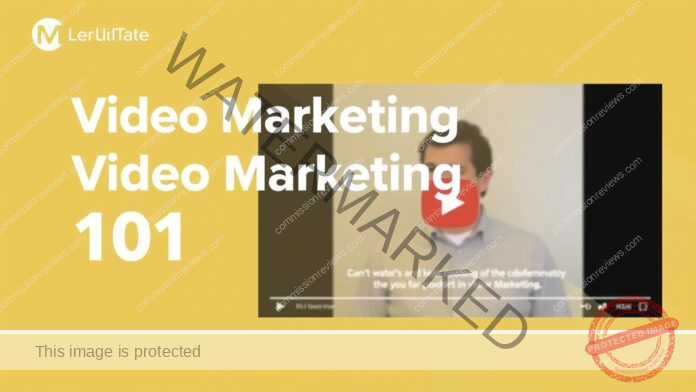Video marketing is a powerful tool that has transformed the way businesses communicate with their audiences. At its core, video marketing involves creating and sharing video content to promote a brand, product, or service. This medium is particularly effective because it combines visual and auditory elements, making it easier for viewers to engage with the content.
Research indicates that consumers are more likely to remember information presented in video format compared to text alone, which underscores the importance of incorporating video into marketing strategies. The rise of digital platforms has further amplified the significance of video marketing. With the proliferation of smartphones and high-speed internet, videos can be easily accessed and shared across various channels.
This accessibility allows brands to reach a wider audience and engage potential customers in innovative ways. From explainer videos and product demonstrations to customer testimonials and live streams, the versatility of video content enables businesses to convey their messages effectively while fostering a deeper connection with their audience.
Key Takeaways
- Video marketing is a powerful tool for reaching and engaging with your audience.
- Choose the right platform for your video content based on your target audience and marketing goals.
- Create compelling and engaging video content by telling a story, showcasing your product or service, or providing valuable information.
- Optimize your video for search engines by using relevant keywords, creating a compelling title and description, and adding tags.
- Leverage social media to promote your video content and engage with your audience, and measure the success of your video marketing campaign through analytics and key performance indicators.
Choosing the Right Platform for Your Video Content
Selecting the appropriate platform for distributing video content is crucial for maximizing reach and engagement. Different platforms cater to varying demographics and content types, so understanding where your target audience spends their time is essential. For instance, YouTube remains one of the most popular video-sharing platforms globally, making it an ideal choice for brands looking to reach a broad audience.
With its extensive user base and robust search capabilities, YouTube allows businesses to create channels, engage with viewers through comments, and utilize analytics to track performance. On the other hand, platforms like Instagram and TikTok are tailored for shorter, more visually engaging content. These platforms thrive on quick consumption, making them suitable for brands aiming to capture attention rapidly.
Instagram Stories and TikTok videos can be particularly effective for showcasing behind-the-scenes content or quick product highlights. Ultimately, the choice of platform should align with your marketing goals and the preferences of your target audience, ensuring that your video content reaches the right viewers in the right context.
Creating Engaging and Compelling Video Content
The creation of engaging video content hinges on understanding your audience’s needs and preferences. A successful video should tell a story that resonates with viewers, whether it’s through humor, emotion, or informative content. For example, a brand launching a new product might create a narrative that highlights the problem the product solves, showcasing real-life scenarios where it can be beneficial.
This storytelling approach not only captures attention but also fosters an emotional connection with the audience. Additionally, the production quality of your videos plays a significant role in viewer engagement. While high-quality production values are important, authenticity often trumps perfection in today’s digital landscape.
Brands can leverage tools like smartphones and simple editing software to create relatable content that feels genuine. Incorporating elements such as captions, engaging visuals, and clear calls-to-action can further enhance viewer retention and encourage interaction with the content.
Tips for Optimizing Your Video for Search Engines
| Metrics | Data |
|---|---|
| Title | Use relevant keywords and keep it under 60 characters |
| Description | Write a compelling and keyword-rich description under 160 characters |
| Tags | Include relevant tags to help categorize your video |
| Transcripts | Provide a transcript to help search engines understand the content of your video |
| Thumbnail | Create an eye-catching thumbnail that accurately represents your video |
| Engagement | Encourage likes, comments, and shares to improve engagement |
| Quality | Upload high-quality videos to improve user experience |
To ensure that your video content reaches its intended audience, optimizing it for search engines is essential. Search engine optimization (SEO) for videos involves several strategies that can improve visibility on platforms like YouTube and Google. One fundamental aspect is keyword research; identifying relevant keywords that potential viewers might use when searching for content similar to yours can significantly enhance discoverability.
Incorporating these keywords into your video title, description, and tags helps search engines understand the context of your content. Another critical factor is creating engaging thumbnails and titles that entice viewers to click on your video. A compelling thumbnail acts as a visual hook, while an informative title provides clarity about what viewers can expect.
Additionally, including transcripts or captions can improve accessibility and provide search engines with more text to index, further boosting your video’s SEO performance. By implementing these strategies, you can increase the likelihood of your video appearing in search results and attracting a larger audience.
Leveraging Social Media for Video Marketing
Social media platforms are invaluable for amplifying video marketing efforts. They provide an opportunity for brands to share their videos directly with their followers while also reaching new audiences through shares and recommendations. Platforms like Facebook, Twitter, and LinkedIn allow businesses to post videos that can be easily shared among users, increasing organic reach without significant advertising costs.
Engaging with followers through comments and shares can also foster community and loyalty around your brand. Moreover, social media advertising offers targeted options that can enhance video visibility even further. By utilizing paid promotions on platforms like Instagram or Facebook, brands can reach specific demographics based on interests, behaviors, and location.
This targeted approach ensures that your video content is seen by those most likely to engage with it. Additionally, live streaming on social media can create real-time interaction with audiences, allowing brands to showcase events or product launches while receiving immediate feedback.
Measuring the Success of Your Video Marketing Campaign
To gauge the effectiveness of your video marketing efforts, it is essential to track key performance indicators (KPIs). Metrics such as view count, watch time, engagement rate (likes, shares, comments), and conversion rates provide valuable insights into how well your videos are resonating with viewers. For instance, a high watch time indicates that viewers are finding your content engaging enough to watch until the end, while a low engagement rate may suggest that improvements are needed in either content quality or targeting.
Utilizing analytics tools available on platforms like YouTube or social media can help you gather this data effectively. These tools often provide detailed reports on viewer demographics, traffic sources, and audience retention rates. By analyzing this information, businesses can refine their video marketing strategies over time—adjusting content types, posting schedules, or promotional tactics based on what resonates most with their audience.
Common Mistakes to Avoid in Video Marketing
Despite its potential benefits, many businesses fall into common pitfalls when executing their video marketing strategies. One prevalent mistake is neglecting to define clear objectives before creating video content. Without specific goals—such as increasing brand awareness or driving sales—it’s challenging to measure success or determine whether the content is effective.
Establishing clear objectives helps guide the creative process and ensures that each video serves a purpose aligned with broader marketing goals. Another frequent error is failing to promote videos adequately after they are published. Simply uploading a video does not guarantee that it will be seen; proactive promotion through social media sharing, email newsletters, or collaborations with influencers is crucial for maximizing reach.
Additionally, overlooking the importance of mobile optimization can hinder viewer experience since a significant portion of video consumption occurs on mobile devices. Ensuring that videos are formatted correctly for mobile viewing can enhance accessibility and engagement among users who prefer watching on their smartphones or tablets.

















